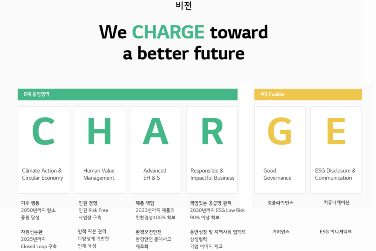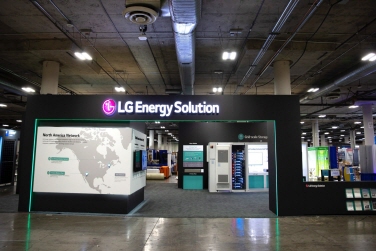LG Energy Solution became the first battery company in Korea to declare support for the TCFD (Task Force on Climate-related Financial Disclosures) to address the global challenge of climate change. We transparently disclose our efforts to combat climate change and incorporate the TCFD’s recommendations into our activities, which are structured in four thematic areas that represent the core elements of our organization’s operations: △Governance, △Strategy, △Risk management, △Metrics and targets. Now, let us delve into how we are implementing them in each area!
PART 1. Governance
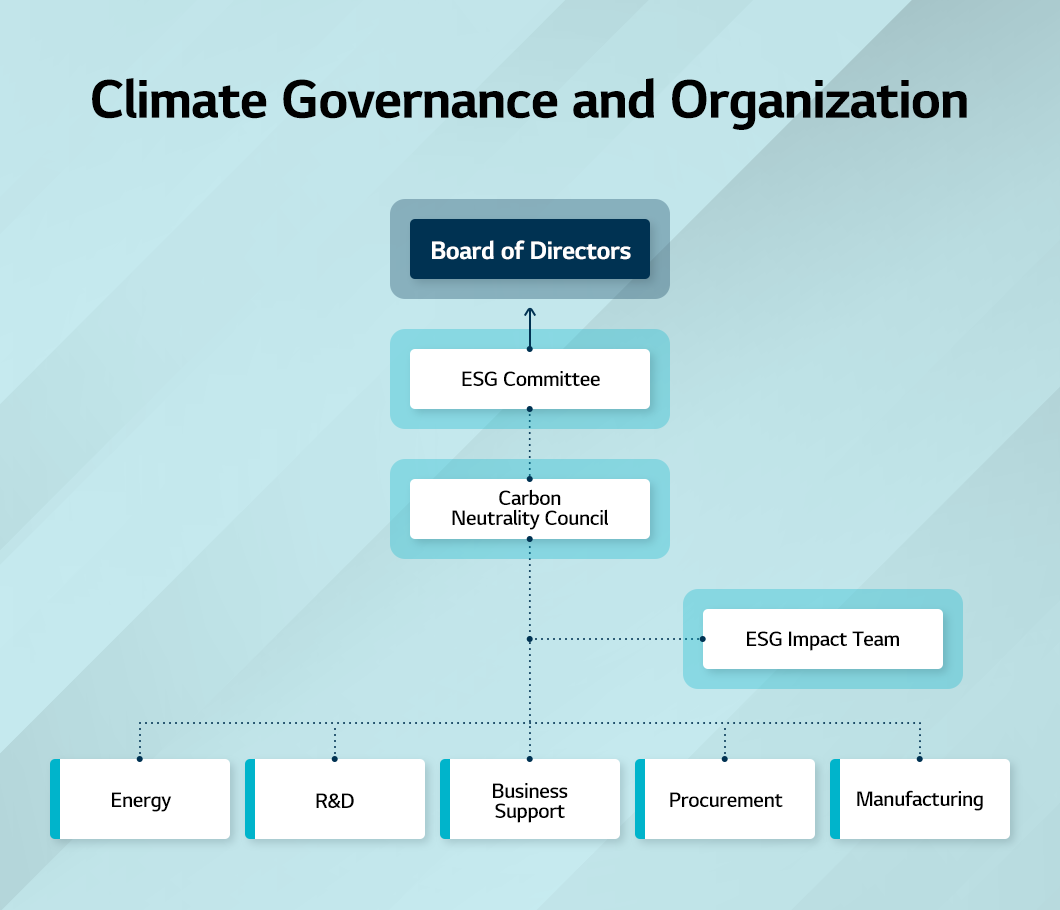
Climate governance is dealt with by the ESG Committee, the Carbon Neutrality Council, and the ESG Impact Team.
The ESG Committee establishes the fundamental policies, strategies, and mid-to long-term goals related to ESG management such as environment, human rights, safety & health, social responsibility, customer value, shareholder value, and corporate governance. It is responsible for deliberation and resolution in relation to the operation of ESG-related matters, and the progress on implementing climate-related tasks is regularly reported to the Board of Directors.
Comprised of departments responsible for implementing carbon negative strategies, the Carbon Neutrality Council convenes quarterly. The Council shares identified climate-related risks and discusses response measures while checking the progress on implementing strategic tasks and sharing the insights.
The ESG Impact Team has identified risks and opportunities caused by climate change that may impact the company, and formulated a Carbon Negative Strategy by 2050. It also operates the Carbon Neutrality Council and communicates with internal and external stakeholders through external disclosure systems such as the CDP (Carbon Disclosure Project) and the TCFD.
PART 2. Strategy
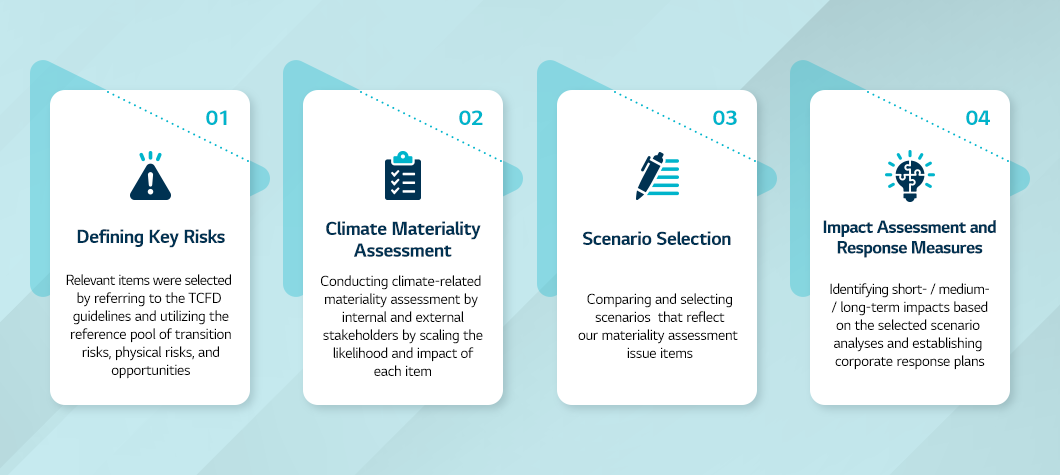
LG Energy Solution has divided and categorized the risks and opportunities associated with climate change into two by adhering to the TCFD recommendations. We focused on the “physical risks” that arise when we fail to respond to climate change and the “transition risks” that may occur due to social and economic changes when implementing efforts to respond to climate change.
We use a four-step process—Defining Key Risks, Assessing Climate Materiality, Scenario Selection, and Impact Assessment and Response Measures—to evaluate the impact of tangible risks and opportunities on our company and to develop our strategic response.
PART 3. Risk Management
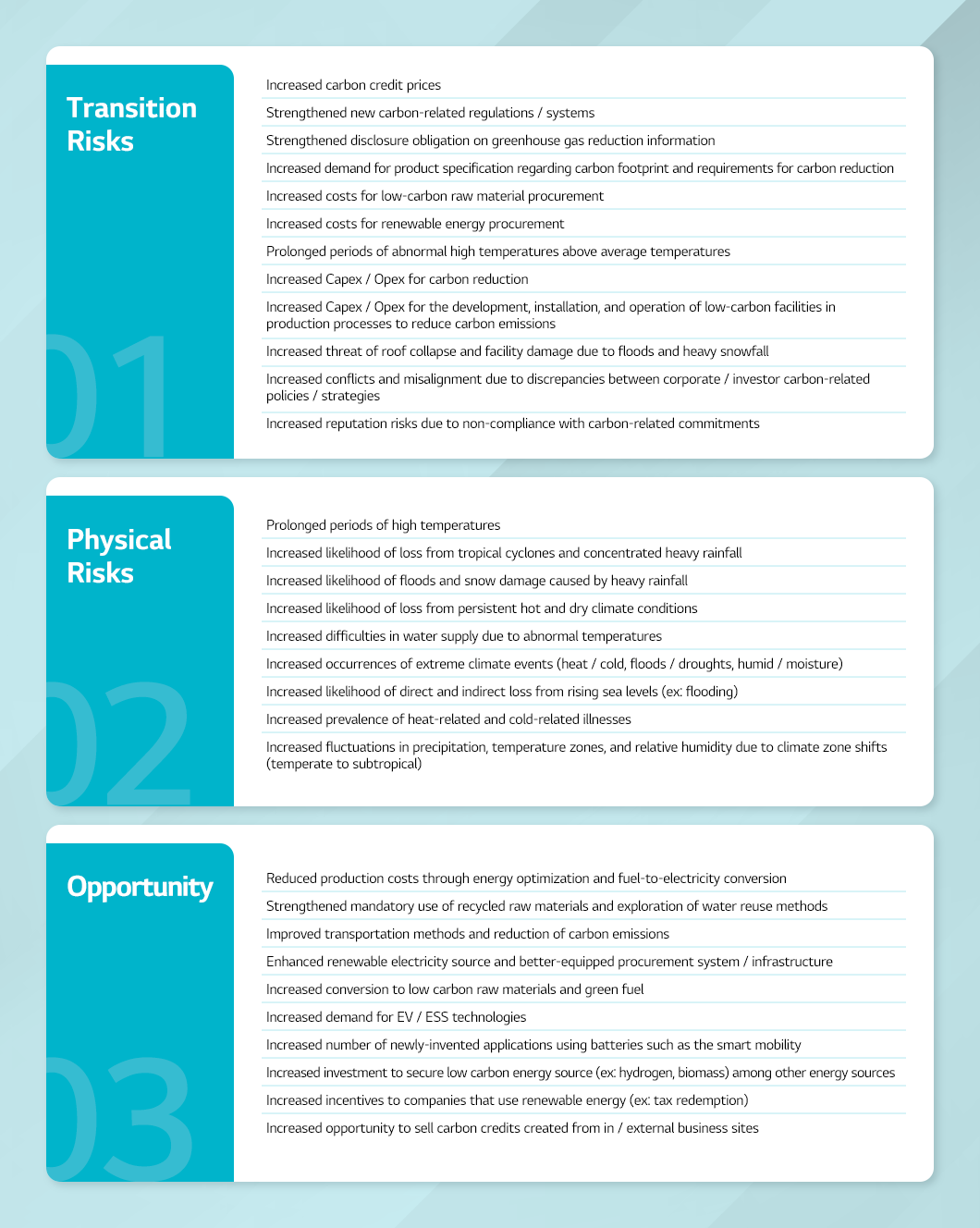
We identified 31 risk and opportunity factors by conducting peer industry analysis, stakeholder surveys, and literature review, referring to the pool of risks and opportunities listed in the TCFD Guidelines. We then assessed climate materiality of these issues for short-term (~2025), medium-term (~2040), and long-term (~2050) periods. Following the materiality assessment, we determined 15 risks based on their likelihood and their impact for each period.
LG Energy Solution goes beyond the initial analysis by analyzing various climate scenarios for the selected significant items to understand their impact on our business. Through this assessment, we plan to establish response strategies and set the direction for the uncertain future of climate change and strengthen our system to manage these risk and opportunity factors.
PART 4. Metrics and Targets
LG Energy Solution has aligned our management metrics with the criteria set by reputable assessment organizations to comply with the standards required by domestic and international regulatory authorities and institutions. In particular, we have reflected the standards and requirements of the Dow Jones Sustainability Indices (DJSI), Morgan Stanley Capital International Index (MSCI), and Korea Institute of Corporate Governance and Sustainability (KCGS) into our management metrics.
In terms of disclosure standards, LG Energy Solution analyzed over 600 indicators, including climate change disclosures from the Carbon Disclosure Project (CDP), sustainability reporting standards from the European Sustainability Reporting Standards (ESRS), climate-related disclosures from the U.S. Securities and Exchange Commission (SEC), and climate-related disclosures (IFRS S2) from the International Sustainability Standards Board (ISSB), etc. This comprehensive analysis enables us to gather and disclose data on energy, greenhouse gases, water resources, waste, and other climate-related issues at our business sites, in line with the TCFD recommendations.
To quantify greenhouse gas (GHG) emissions, we applied the Korea Emission Trading System (K-ETS) guidelines for global warming potential (GWP) and utilized the Second Assessment Report (SAR-100yr) by the Intergovernmental Panel on Climate Change (IPCC) for domestic sites, while the 5th Assessment Report (AR5) standards were applied for international locations.
We have reviewed the initiatives of LG Energy Solution, which has transparently shared its activities responding to climate change, guided by the TCFD framework. LG Energy Solution is committed to accelerating its eco-friendly management practices to pave the way for a sustainable future!
